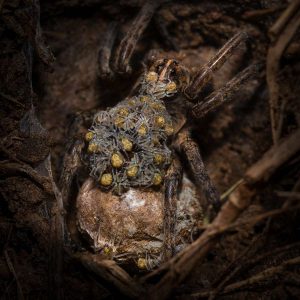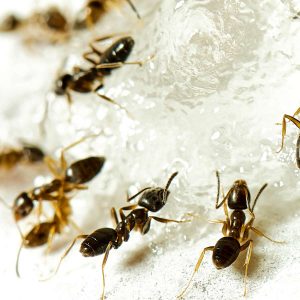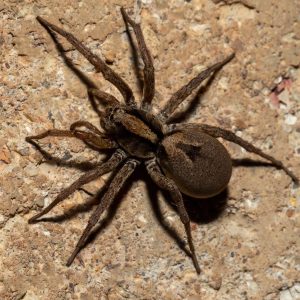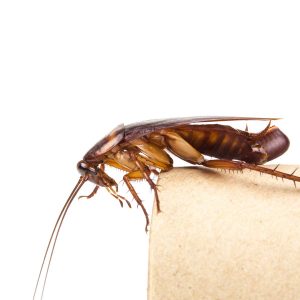Think rabbits, as in the saying “breeding like rabbits.” Cockroaches have several natural survival tools and, like rabbits, one of their top talents is baby-making. Roaches are also extremely social creatures, so if you see one cockroach on your property, it’s safe to assume there are others, possibly lots of others. But how quickly do cockroaches reproduce?
It depends on the exact species, so let’s start with a brief tour of the most common cockroach species found in American homes.
What Kind of Cockroach is in My House?
Of the 4,500 known cockroach species in the world, 69 are found in the United States, but we’ll focus on the four species most commonly found in American homes and businesses.
American Cockroach
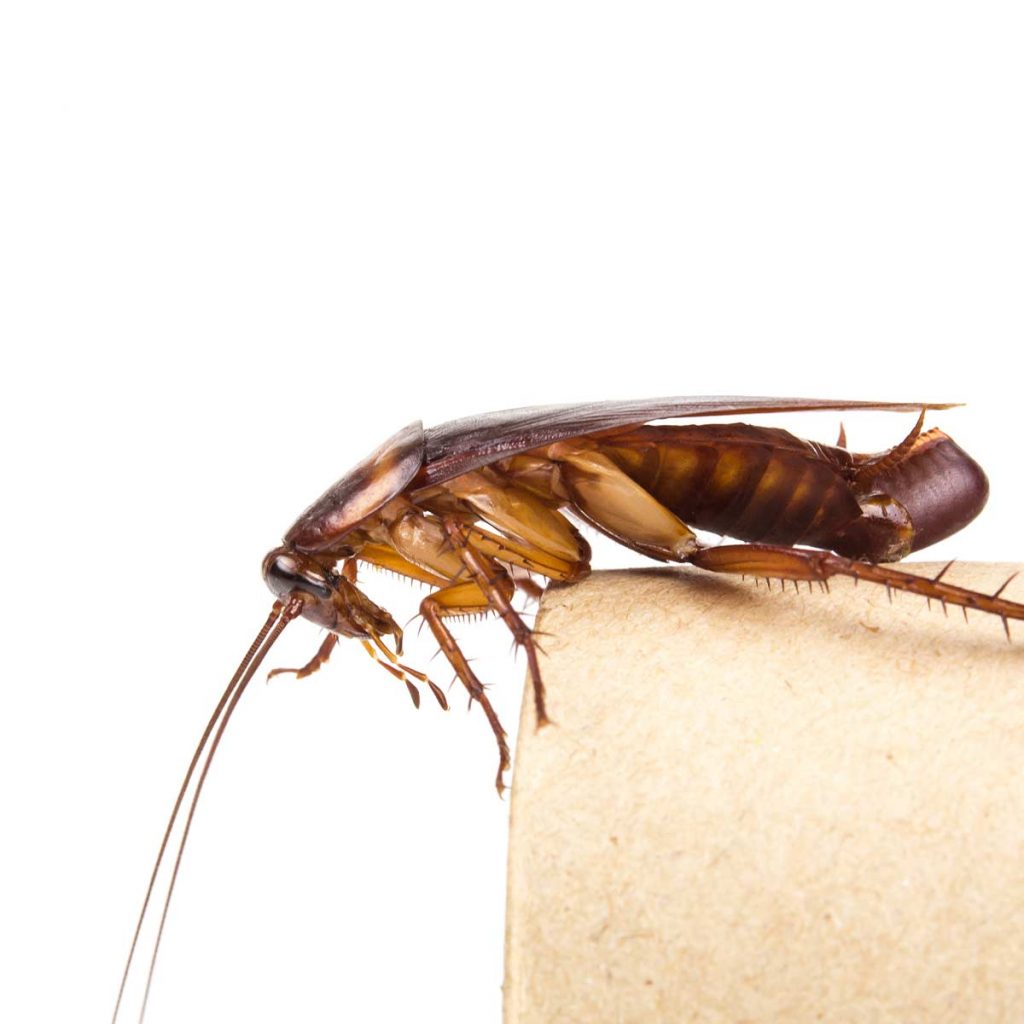
Size: 35 – 40 mm
Color: Reddish-brown, yellow band on the front of the body, shiny appearance
These nasty customers thrive all over the world, and they are one of the largest species to invade American homes. They can fly short distances, but prefer walking (maybe “creeping” is a better word). Female cockroaches reproduce by producing one egg case (called an ootheca) per month, and each ootheca contains an average of 16 eggs.
German Cockroach
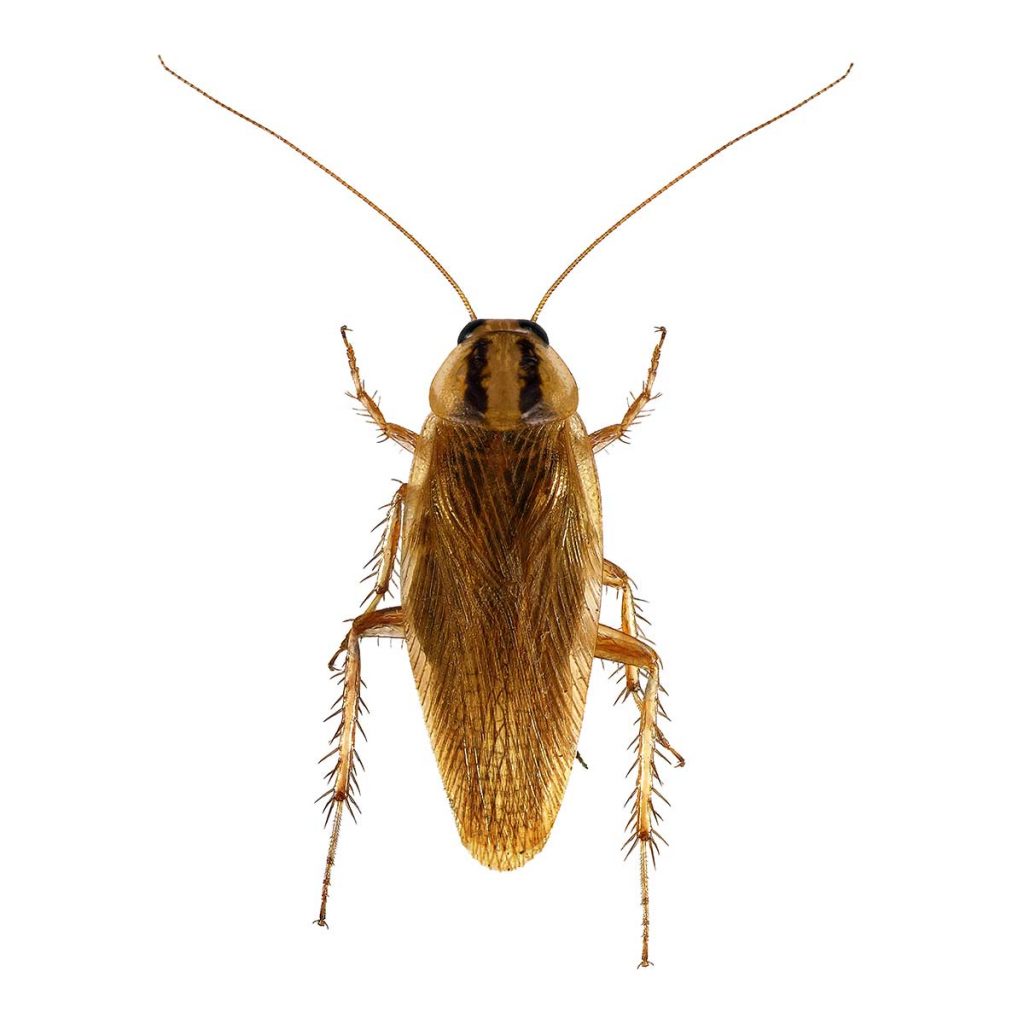
Size: 12 – 15 mm
Color: Light brown to tan
Also found worldwide, the German cockroach is a prodigious baby maker, producing as many as 40 eggs per ootheca. Like American roaches, they can hatch a new batch of toddlers once a month. They’re also boss-level poopers, so you may see roach droppings or stains in their hiding places. If you have enough of them, you’ll smell a musty odor. They can fly, but usually travel on foot.
Oriental Cockroach
Size: 20 – 25 mm
Color: Dark brown or black
With an average of 16 eggs per ootheca, one Oriental cockroach can produce a new brood of youngsters every two months.
This tough species can survive long periods of freezing weather, and their affinity for cooler temperatures makes them more likely to be found in crawl spaces, basements, and outdoor trash/debris heaps. Because they often tend to feed in filthy places, they’re more likely to transmit disease than predominantly indoor species. Microorganisms carried by Oriental roaches have been linked to gastroenteritis in humans.
Brown-Banded Cockroach
Size: 10 – 15 mm
Color: Light brown to tan
These little aliens began entering the United States illegally in the early 20th century, with roots traceable to Europe, Cuba, and Africa. A warmer-temperature species, brown-banded roaches produce 16 eggs per ootheca, with a 50-day gestation period. But the females only carry the oothecae for a couple of days, then adhere them to furniture, walls, or boxes, so you may spot “nurseries” in some odd places, with this species on your property.
How Long Do Roaches Live?
Roaches reach adulthood in 3 – 4 months with an average life span of up to one year. As soon as a cockroaches reproduce, roach problems begin to grow exponentially. One female German cockroach and her direct offspring can produce up to 300,000 new roaches in her lifetime. Quite a family tree for only a few months’ work.
How Do I Identify Baby Cockroaches?
Cockroach Life Stage #1: Gestation Stage
All insects have three life stages, including the gestation stage described in the previous section (when they’re in the egg). After hatching from eggs, the various species of cockroach differ in appearance during the next two stages, so let’s take them one at a time.
Cockroach Life Stage #2: The Nymph Stage
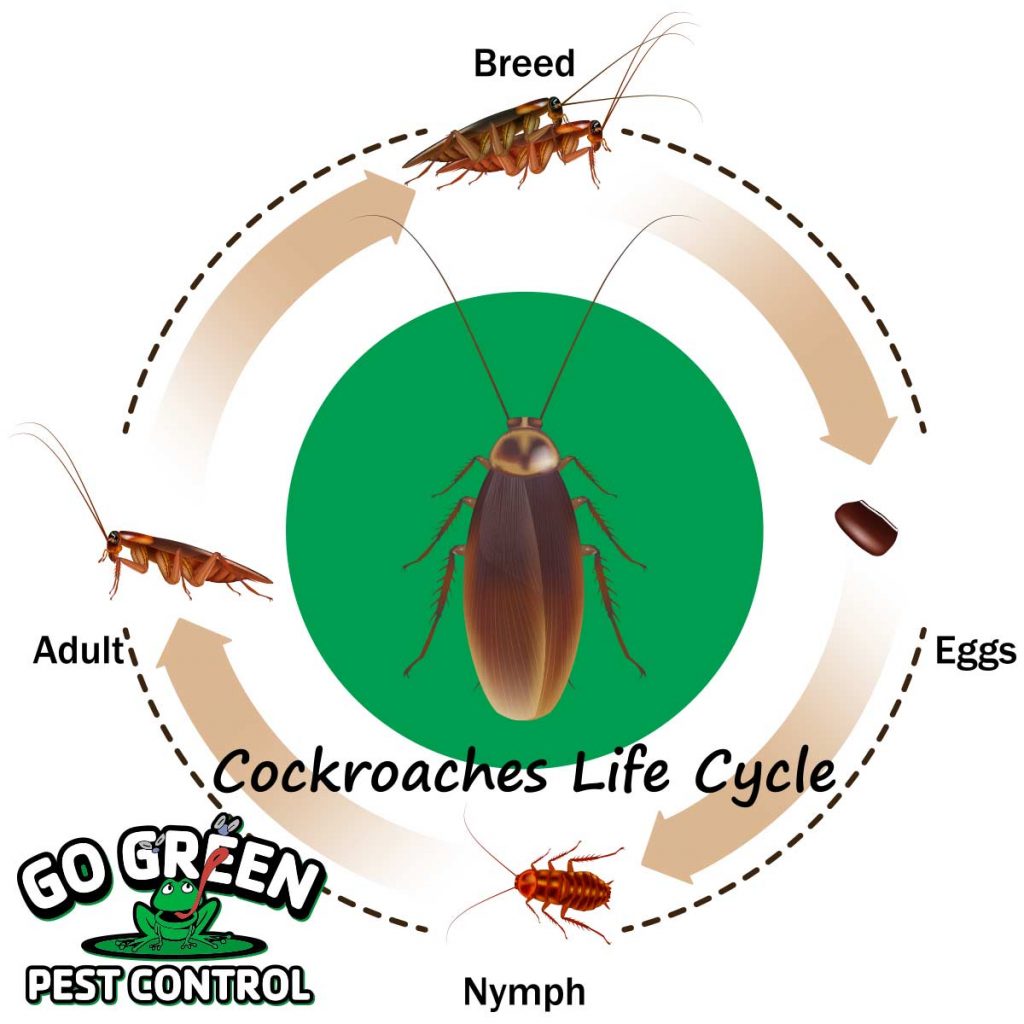
After our little bundles of joy hatch, they enter the nymph stage, which lasts until the adult stage. Here’s a breakdown of nymph descriptions for the four common species…
- American cockroach nymphs look a lot like small adults.
- German cockroach nymphs have a tan stripe on the back and are darker in color than the adults.
- Oriental cockroach nymphs look extremely similar to adults.
- Brown-banded cockroach nymphs look very similar to adult females, whose dark bands are much more pronounced than on adult males.
Cockroach Life Stage #3: Adult Stage (Cockroaches Reproduce)
Since we’ve already discussed the differences in physical appearance among the four common roach species, we’ll focus now on the behaviors of various species. This information can be valuable in your battle against the bugs, and if you intend to call a pest control professional, it will help them define a plan of action (commonly called an Integrated Pest Management plan, or IPM).
- Adult American cockroaches can live almost anywhere in the country, but they prefer warmer conditions, so their populations and body sizes can grow to alarming proportions in the southern U.S. They live in sewers, commercial buildings, and residential dwellings. They have no problem sharing habitats with German cockroaches.
- Again, what distinguishes German cockroaches from other species is their alarmingly prodigious fertility, and their unmistakable poop residues. Worst roommates ever.
- Brown-banded roaches have shorter life spans and fewer offspring than other species, so populations tend to grow more slowly and be generally smaller.
- Oriental cockroaches are drawn to the cool places, even the very cold places. They’re most commonly found in the colder parts of buildings or outdoors under piles of organic matter like mulch or decaying trash.
Are Cockroach Eggs Big Enough To See with the Naked Eye?
The eggs are tiny, but the oothecae that contains them are big enough to see. They’re brown when first deposited, then they turn black within a few days.
Can Baby Cockroaches Fly?
No, their wings don’t grow in until adulthood.
Do Cockroaches Carry Disease?
Big “yes” on this one. Cockroaches are some of the germiest pests to plague humanity. If you’re a germophobe with cockroaches in your home, go ahead and freak out now.
How Do I Get Rid of Cockroaches?
If you’re one of the lucky few who catches the the infestation before the cockroaches reproduce and the problem gets too big, you may be able to solve it with over-the-counter remedies. Sadly, by the time most property owners see one cockroach, the infestation has already progressed beyond the DIY treatment stage.
The problem with roaches is that they can enter buildings through the smallest openings, eat anything humans eat, and hide successfully from us under cover of darkness (they’re nocturnal) until their populations literally overrun their hiding places. If you see a roach in the daytime, it probably means they have reached this stage of infestation.
A professional IPM plan is the only affordable and effective way to permanently keep roaches under control because the work is guaranteed to be both, 100 percent effective, and as safe as possible for the humans and pets who occupy your property.
Learn more on the Go Green Pest Control website, or give us a call to chat with a professional: (316) 733-0687 in Wichita or (785) 377-0687 in Manhattan and Junction City.

